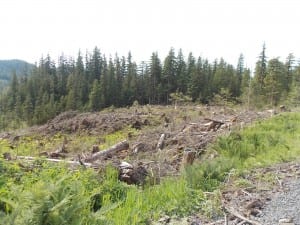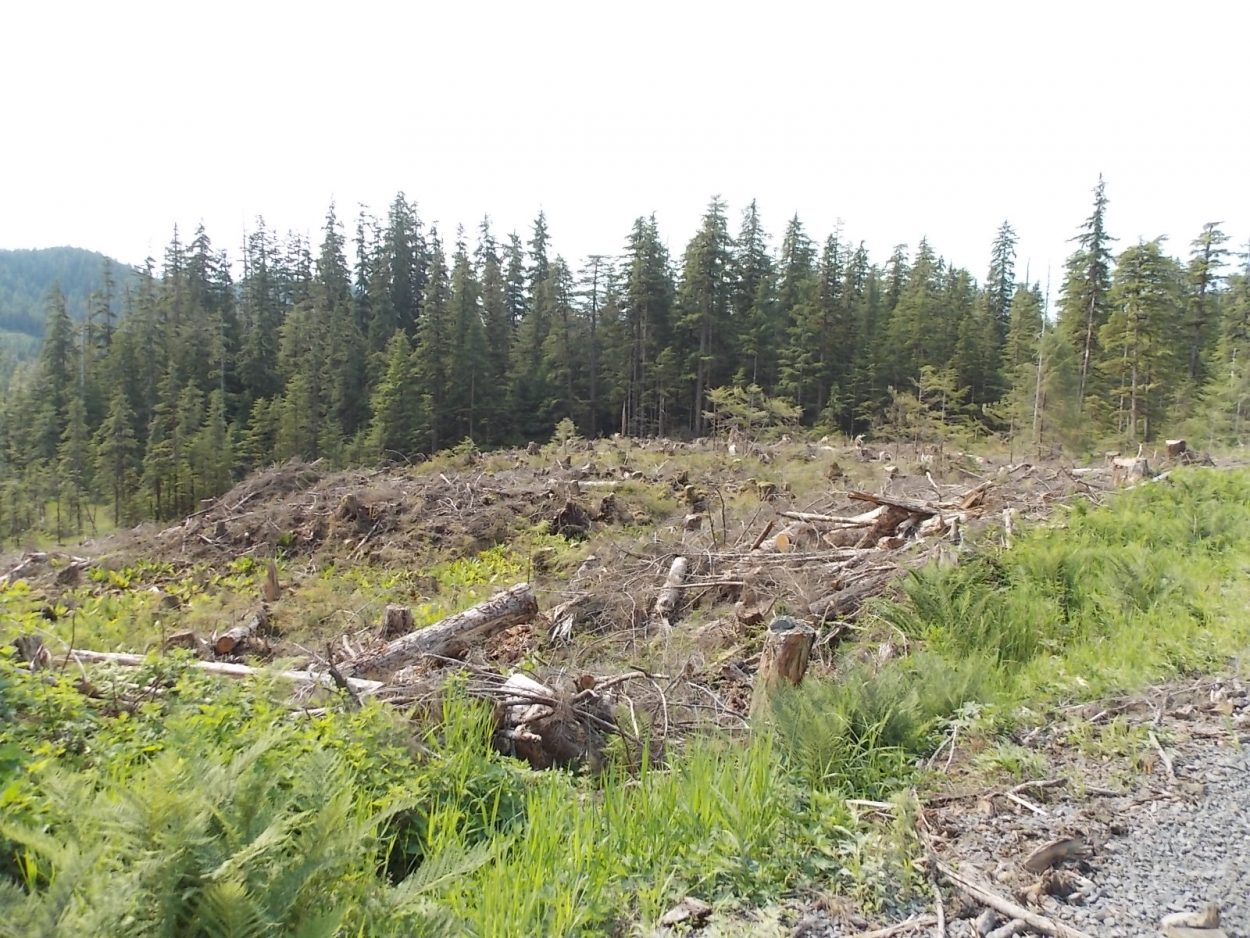Testimony in Petersburg this month on subsistence use on the Tongass National Forest focused on deer and salmon habitat and potential impacts from logging. U.S. Forest Service officials have been gathering input on a new plan for managing the nearly 17 million acre forest, with a 16-year transition away from logging old growth trees.
The agency in November released its draft Tongass Land and Resource Management plan, spelling out where logging and other development is allowed on the forest. The plan reflects unanimous recommendation by a fifteen-person Tongass Advisory Committee on transitioning to a harvest of younger, second growth trees on areas that have already been logged.
Only two people testified at a subsistence hearing in Petersburg. Joe Sebastian directed his comments toward that committee, or TAC. “What does a timber-lopsided TAC know about salmon production on the Tongass?,” Sebastian asked. “What does a TAC know about subsistence use patterns and needs in the Tongass? What does the TAC know about wildlife interactions and seasonal changes of forest dependency on these creatures? This sham panel of self-interested forest exploiters on the TAC is a new low for the U.S. Forest Service.”
The agency is required to hold hearings on the forest plan’s impacts on subsistence resources under the Alaska National Interest Lands Conservation Act. That law provides for “the continuation of the opportunity for subsistence uses by rural residents of Alaska, including both Natives and non-Natives, on the public lands.” It also gives priority to subsistence uses on public lands in the state.
Sebastian thought the 16-year transition took too long to get away from harvesting old growth trees. He brought up the example of the Tonka timber sale, which meant logging of old growth trees on nearby Kupreanof Island southwest of Petersburg. “That’s gonna hurt this area for a long, long time to come,” he testified. “Not just one year, not just ten years, probably the next hundred years. And already we’re having significant restrictions of deer with a two-week hunting season on the Lindenberg Peninsula, a two-week hunting season on Mitkof Island and many people travel all the way to Admiralty Island to try and get a few deer for the wintertime.”

The preferred alternative in the plan would see a harvest of 46 million board feet annually across the forest. In the first decade the bulk of that, 37 million board feet, would be continued harvest of old growth trees. The old growth harvest would drop to just five million board feet by the 16th year of the plan. To compare, harvests on the Tongass over the past decade have averaged 36 million board feet a year.
Karin McCullough, another person testifying was concerned with that level of logging. “One of my biggest concerns is the allowable cuttage of board feet, that market demand drives that,” McCullough said. “I would like to see the driver for that the habitat for fish and game on the land. And I would like to see an acknowledgment for the habitat of our huge Southeast estuarine area that forest itself is part of.”
McCullough said she also wanted to see larger buffers around fish streams.
Public comment on the plan is open through February 22nd.
Here’s a prior story on the release of the plan
Here’s coverage of the Tongass Advisory Committee
Here are stories about the plan open houses held in Ketchikan and Wrangell










